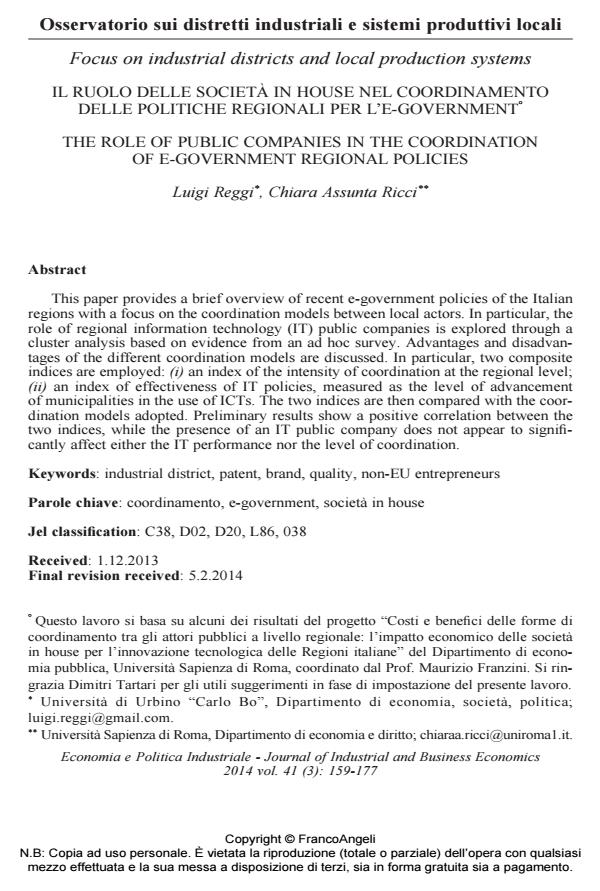The role of public companies in the coordination of e-government regional policies
Journal title ECONOMIA E POLITICA INDUSTRIALE
Author/s Luigi Reggi, Chiara Assunta Ricci
Publishing Year 2014 Issue 2014/3
Language Italian Pages 19 P. 159-177 File size 91 KB
DOI 10.3280/POLI2014-003007
DOI is like a bar code for intellectual property: to have more infomation
click here
Below, you can see the article first page
If you want to buy this article in PDF format, you can do it, following the instructions to buy download credits

FrancoAngeli is member of Publishers International Linking Association, Inc (PILA), a not-for-profit association which run the CrossRef service enabling links to and from online scholarly content.
This paper provides a brief overview of recent e-government policies of the Italian regions with a focus on the coordination models between local actors. In particular, the role of regional information technology (IT) public companies is explored through a cluster analysis based on evidence from an ad hoc survey. Advantages and disadvantages of the different coordination models are discussed. In particular, two composite indices are employed: (i) an index of the intensity of coordination at the regional level; (ii) an index of effectiveness of IT policies, measured as the level of advancement of municipalities in the use of ICTs. The two indices are then compared with the coordination models adopted. Preliminary results show a positive correlation between the two indices, while the presence of an IT public company does not appear to significantly affect either the IT performance nor the level of coordination.
Keywords: Industrial district, patent, brand, quality, non-EU entrepreneurs
Jel codes: C38, D02, D20, L86, 038
- Institutional logics and organizational change: the role of place and time Diego Ponte, Caterina Pesci, in Journal of Management and Governance /2022 pp.891
DOI: 10.1007/s10997-021-09578-6
Luigi Reggi, Chiara Assunta Ricci, Il ruolo delle società in house nel coordinamento delle politiche regionali per l’e-government in "ECONOMIA E POLITICA INDUSTRIALE " 3/2014, pp 159-177, DOI: 10.3280/POLI2014-003007